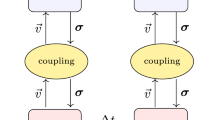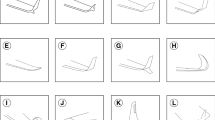Abstract
The interaction between membrane structures and their environment can be either static or dynamic. Static interaction refers to interaction with static air, while dynamic interaction refers to wind and its effects. They can be evaluated by two parameters, added mass and radiation /aerodynamic damping, which are experimentally investigated in this study. The study includes the effects of both the static and dynamic interaction on structural dynamic characteristics, and the relationship between the interaction parameters and the covered area of a membrane structure for the static interaction and the relationship between the interaction parameters and wind direction and speed for the dynamic interaction. Experimental data show that the dynamic interaction is strongly correlated with the structural modes, i.e., the interaction of the symmetric modes is much larger than the anti-symmetric modes; and the influence of the dynamic interaction is significant in wind-induced response analysis and cannot be ignored. In addition, it is concluded that the structural natural frequency is remarkably decreased by this interaction, and the frequency band is significantly broadened.
Similar content being viewed by others
References
Daw DJ and Davenport AG (1989), “Aerodynamic Damping and Stiffness of a Semi-circular Roof in Turbulent Wind,” Journal of Wind Engineering and Industrial Aerodynamics, 32: 83–92.
Elashkar I and Novak M (1983), “Wind Tunnel Studies of Cable Roofs,” Journal of Wind Engineering and Industrial Aerodynamics, 13: 407–419.
Ibrahim SR (1977), “Random Decrement Technique for Modal Identification of Structures,” Journal of Spacecraft and Rockets, 14(11): 696–700.
Il’chenko AV and Temnenko VA (1993), “Oscillations of a Membrane That is Orthogonal to a Flow: Asymptotics of Large Stresses,” Journal of Mathematical Sciences, 65(2): 1072–3374.
Ishii K (1997). “Membrane Structures in Japan — Technologies for Supporting Membrane Structures,” IASS International Symposium on Shell & Spatial Structures, Singapore, pp. 15–26.
Kawai H, Yoshie R, Wei R and Shimura M (1999), “Wind-induced Response of a Large Cantilevered Roof,” Journal of Wind Engineering and Industrial Aerodynamics, 83: 263–275.
Kawamura S and Kiuchi T (1986). “An Experimental Study of a One-membrane Type Pneumatic Structure — Wind Load and Response,” Journal of Wind Engineering and Industrial Aerodynamics, 23: 127–140.
Novak M and Kassem M (1990), “Free Vibration of Light Roofs Backed by Cavities,” Journal of the Engineering Mechanics Division, 116(3): 549–564.
Ohkuma T and Marukawa H (1989), “Vibrationinduced Wind Pressure on Large Span Flat Roof and Its Application,” Proceedings of the 2nd Asia-Pacific Symposium on Wind Engineering, Beijing, China, pp. 26–29.
Qin J (2008), “Dynamic Characteristics of Tensioned Cable-membrane Structures,” Spatial Structures, 14(2): 42–47. (in Chinese)
Seybert AF (1981), “Estimation of Damping from Response Spectra,” Journal of Sound and Vibration, 75(2): 199–206.
Takeda T, Kageyama M and Homma Y (1986), “Experimental Studies on Structural Characteristics of a Cable-reinforced Air-supported Structure. Shells,” Membrane and Space Frames, Proceedings of IASS Symposium, Osaka, pp. 141–148.
Wang J and Yang Q (2003), “Calculation on Added Mass of Structures in Fluid Environments,” Journal of Beijing Jiaotong University, 27(1): 40–43. (in Chinese)
Wang J, Yang Q, Wu Y and Zhang L (2003), “Methods for Calculating Added Mass of Fabric Structures,” Spatial Structures, 9(3): 38–41. (in Chinese)
Wu Y, Yang Q and Shen S (2008), “Wind Tunnel Tests on Aeroelastic Effect of Wind-induced Vibration of Tension Structures,” Engineering Mechanics, 25(1): 8–15. (in Chinese)
Yang Q and Liu R (2005), “On Aerodynamic Stability of Membrane Structures,” International Journal of Space Structures, 20(3): 181–188.
Yang Q, Wang J and Wang L (2003), “Interaction of Wind with Fabric Structures,” Spatial Structures, 9(1): 20–24. (in Chinese)
Yang Q, Wu Y and Zhu W (2008), “Experimental Study on the Static Interaction Between Membrane Structures and Air”, China Civil Engineering Journal, 41(5): 19–25. (in Chinese)
Author information
Authors and Affiliations
Corresponding author
Additional information
Supported by: National Natural Science Foundation of China Under Grant No. 50725826, 90815021
Rights and permissions
About this article
Cite this article
Yang, Q., Wu, Y. & Zhu, W. Experimental study on interaction between membrane structures and wind environment. Earthq. Eng. Eng. Vib. 9, 523–532 (2010). https://doi.org/10.1007/s11803-010-0034-0
Received:
Accepted:
Published:
Issue Date:
DOI: https://doi.org/10.1007/s11803-010-0034-0




